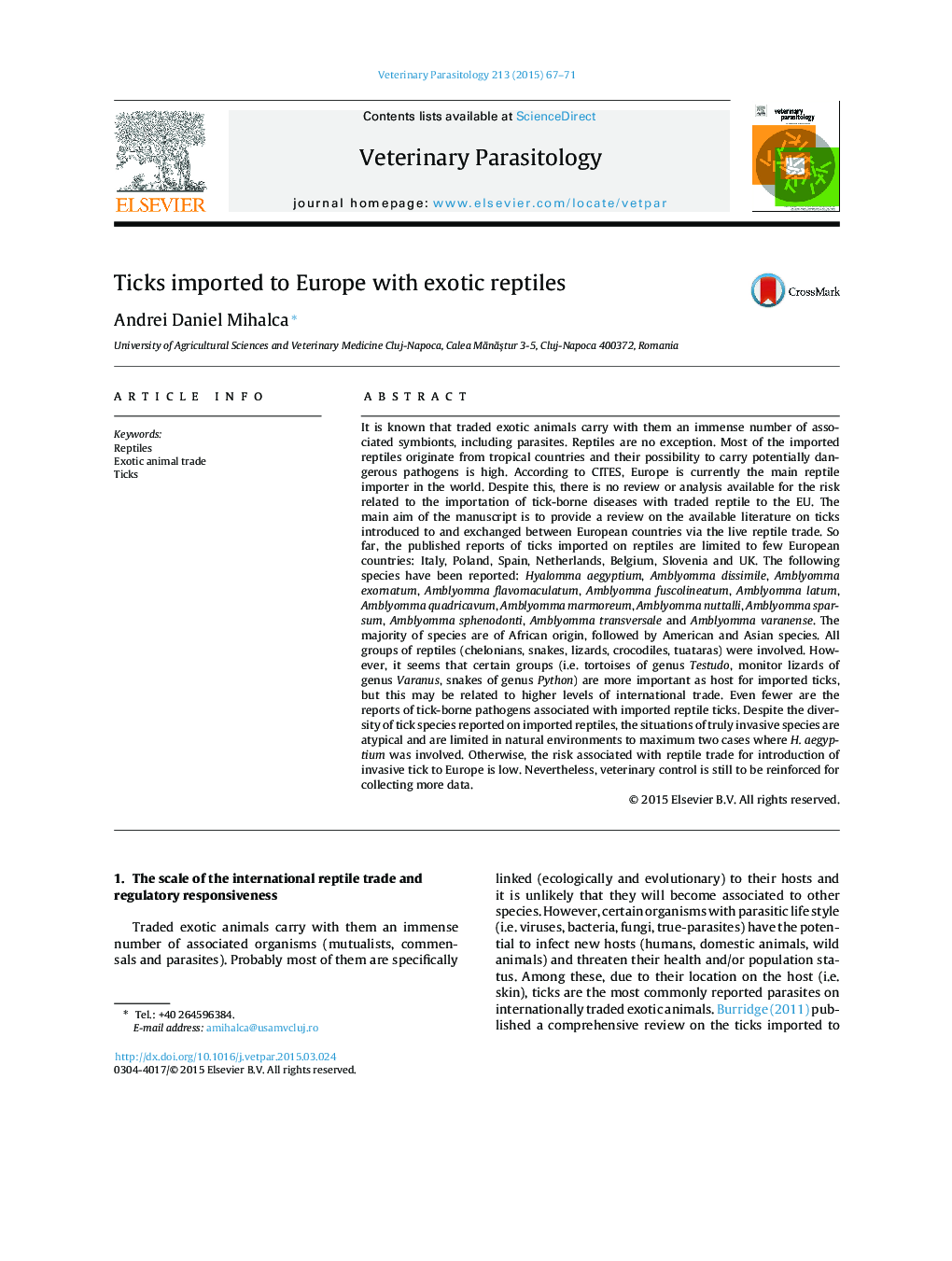| کد مقاله | کد نشریه | سال انتشار | مقاله انگلیسی | نسخه تمام متن |
|---|---|---|---|---|
| 2469982 | 1555665 | 2015 | 5 صفحه PDF | دانلود رایگان |
• The first synoptic list of ticks.
• The first analysis of risk of tick invasion associated with the trade of exotic reptiles to Europe.
• Discussion about the risk of invasion.
It is known that traded exotic animals carry with them an immense number of associated symbionts, including parasites. Reptiles are no exception. Most of the imported reptiles originate from tropical countries and their possibility to carry potentially dangerous pathogens is high. According to CITES, Europe is currently the main reptile importer in the world. Despite this, there is no review or analysis available for the risk related to the importation of tick-borne diseases with traded reptile to the EU. The main aim of the manuscript is to provide a review on the available literature on ticks introduced to and exchanged between European countries via the live reptile trade. So far, the published reports of ticks imported on reptiles are limited to few European countries: Italy, Poland, Spain, Netherlands, Belgium, Slovenia and UK. The following species have been reported: Hyalomma aegyptium, Amblyomma dissimile, Amblyomma exornatum, Amblyomma flavomaculatum, Amblyomma fuscolineatum, Amblyomma latum, Amblyomma quadricavum, Amblyomma marmoreum, Amblyomma nuttalli, Amblyomma sparsum, Amblyomma sphenodonti, Amblyomma transversale and Amblyomma varanense. The majority of species are of African origin, followed by American and Asian species. All groups of reptiles (chelonians, snakes, lizards, crocodiles, tuataras) were involved. However, it seems that certain groups (i.e. tortoises of genus Testudo, monitor lizards of genus Varanus, snakes of genus Python) are more important as host for imported ticks, but this may be related to higher levels of international trade. Even fewer are the reports of tick-borne pathogens associated with imported reptile ticks. Despite the diversity of tick species reported on imported reptiles, the situations of truly invasive species are atypical and are limited in natural environments to maximum two cases where H. aegyptium was involved. Otherwise, the risk associated with reptile trade for introduction of invasive tick to Europe is low. Nevertheless, veterinary control is still to be reinforced for collecting more data.
Journal: Veterinary Parasitology - Volume 213, Issues 1–2, 30 September 2015, Pages 67–71
